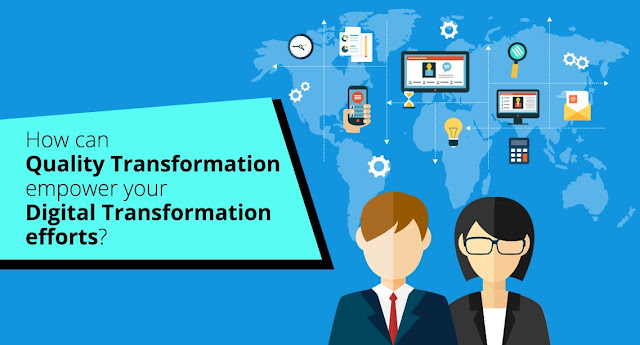Why is Quality Engineering important than quality assurance?
 | |
| Quality Engineering |
The fast-changing
dynamics of the global digital ecosystem involve quick adoption of advanced
technologies, faster time-to-market, seamless rendering of workflow, and the
delivery of top-notch product quality. Should any enterprise flounder in
providing the above-mentioned outcomes, the competitors will ultimately have
the last laugh. Also, enterprises are facing challenges arising out of mergers
and acquisitions, risk and compliance, data and analytics among others. These
activities are kindling the expectations of stakeholders (including end
customers) to a whole new level. No wonder enterprises are looking for ways and
means to stay on the right side of competition. The focus is exclusively on
enhancing the quality of products and services using methodologies like Agile
and DevOps. However, the reshaping of customer expectations and the prevalence
of intense competition in the digital ecosystem, businesses can no longer rely
on the efficacy of shift-left quality assurance alone. They must make a gradual
shift towards quality engineering.
What is Quality
Engineering and how it differs from Quality Assurance?
If quality assurance is
about identifying the defects in a software application or system using the
shift-left or waterfall model of testing, software quality engineering is about transforming the product
workflow, processes, and team culture to pre-empt the ingress of glitches in
the first place. So, if QA is about identifying and removing glitches, QE is
about reshaping the workflow to prevent the generation of glitches. The latter
encompasses methodologies that have an omnichannel approach straddling multiple
engineering disciplines. In software
quality engineering, the activities involve the designing, development
and manufacturing of products to enhance their quality as well as reduce waste
along the way.
The quality engineering
approach is not just about following end-to-end
software testing as in a typical QA process. It is about defining, analysing,
and implementing technologies, methods, and tools that are in tune with the
business objectives of enterprises. The software
quality engineering services may involve the following key
activities.
Automation of testing
processes: When it comes to the
quick delivery of products/services to beat the competition and garner customer
satisfaction, the existing testing processes need to be automated. Here, AI can
be leveraged to analyse the glitch prone sections of software as well as to
suggest correctives. Test automation can enhance conventional test strategies through
AI and achieve continuous integration and delivery – noted outcomes of DevOps
methodology. Test automation can leverage both AI and Machine Learning (AI
& ML) to optimize testing.
Strengthen shift-right
testing: As businesses go about
developing and deploying quality applications, elements like mobile commerce,
social, IoT adoption and cloud are making QA shift left and strengthen right.
The comprehensive QE initiative would involve activities like virtualization,
test-driven-development, API testing, performance engineering, security
testing, and analytics-driven automated testing. Since the ultimate objective
of enterprises is to develop quality products that can derive customer delight,
shift-right testing helps to validate the quality of software from the right –
post production. This test approach focuses on the performance and usability of
the software and in the process, seeks continuous feedback from customers to
understand their behaviour.
Achieve agility: Agile and DevOps have emerged as key enablers for business
enterprises in a software development life cycle. The effective implementation
of digital quality engineering
by leveraging industry best practices can help businesses achieve quality
outcomes across digital touchpoints. The Agile-led processes can identify and
mitigate glitches besides integrating the various software modules faster to
deliver customer delight.
Value proposition: The software QE services
test and analyze the entire value chain thereby looking for inherent
vulnerabilities or defects. These services ensure the value chain is compliant
with the regulatory requirements and has the necessary wherewithal to detect
and eliminate glitches. Also, there is a renewed focus on offering customer-centric
innovative solutions and enhancing the value proposition. These objectives are
achieved through minimal testing efforts and encompass the reduction in
production glitches. As quality
engineering aims at improving the test effectiveness of enterprises, the
quality assurance of product/service gets enhanced leading to its rising
acceptability among customers.
Conclusion
With the automation of
workflow including the regression suite, there is an increased adoption of
mature practices and testing methodologies. The implementation of quality
engineering over quality assurance by using tools like 4D analytics, Artificial
Intelligence, and Machine Learning can lead to the optimization of test cases
and better prediction/identification/mitigation of data.
Check out this White Paper to know the significance of
Application Performance monitoring for the aviation industry from Quality
Engineering perspective.
Diya works for Cigniti Technologies, Global Leaders in
Independent Quality Engineering & Software
Testing Services to be appraised at CMMI-SVC v1.3, Maturity Level 5,
and is also ISO 9001:2015 & ISO 27001:2013 certified.


Comments
Post a Comment